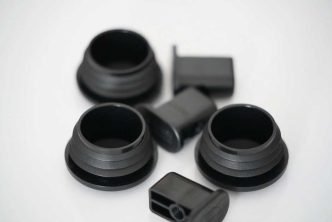Instantly connecting hot leads to relevant sales agents ultimately allows you to close more sales. In addition, doing so enhances the customer journey, scales your business, and – most importantly – makes your customers happy.
Phonexa’s lead distribution software immediately directs consumers to what they are looking for or whoever can help them best. Part of the all-encompassing LMS Sync product, Phonexa’s lead distribution software is extensively used by companies with internal sales departments and those selling leads to advertisers, all while granting the best price for the leads that are sold or bought.
Read on to learn more about automated lead distribution.
What Is Automated Lead Distribution and How Does It Work?
Manually connecting leads to the product they seek is impractical, especially when you have hundreds and thousands of customers. If your business generates high traffic, you will benefit from automated lead distribution.
- Automation allows for increasing the number of qualified leads by 451%.
Automated software like Phonexa creates a market where every participant determines what and how many leads they want to buy or sell and at what price. This is referred to as an auction-based lead distribution method. As the leads are generated, they are distributed in real-time based on the chosen criteria, leaving sellers and buyers better off after the deal.
- Publishers sell their leads at the best price right after these leads are generated.
- Advertisers buy as many high-intent leads as they need at a target price.
Furthermore, all leads are qualified before they hit the market so advertisers don’t have to deal with duplicated or fraudulent leads. At the same time, customizable settings – demographics, location, price per lead, number of leads to buy or sell, etc. – allow for the most effective distribution, giving all parties what they expect.
The Pros and Cons of Each Type of Lead Distribution
The goal of every lead distribution software is the same – to connect leads to relevant agents while satisfying the conditions of publishers and advertisers – but the methods are different.
Lead distribution can be based on:
- Performance of sales agents. With this model, top-shelf agents reap all the benefits, whereas their aspiring colleagues may have few or no consumers. Performance-based distribution makes sense when you buy or sell something expensive — for example, real estate.
- Availability of sales agents. Leads are immediately transferred to available sales agents, reducing the response time. However, this model may not always work well with pricey or exclusive leads.
- Location of leads and sales reps. Location-based distribution allows for the best customer journey because leads typically feel on the same page with the agents they speak to. For example, consumers looking for flood insurance will be served best by agents from flood-prone states. This, however, may reduce the number of consumers for agents from dry states.
- Company size. The company-size distribution method favors world-scale brands while keeping smaller companies in the background.
- Advertiser’s choice. Choice-based distribution benefits advertisers, who can pick the leads they want while possibly causing lead devaluation and decreasing the publisher’s profits.
- Auction. With a free auction, buyers and sellers compete for the leads they need. This might be the best lead distribution method — it’s used by Phonexa and marketing giants alike.
But then again, the method you employ must fit your business’s type, scale, and needs. Sometimes, combining several methods can get you the leads you want.
How Can Automated Lead Distribution Grow Your Business?
Automatic lead distribution will allow you to sell or buy leads at the optimal price, guarantee the best customer journey for your consumers, enhance your brand image, and grow your ROI. However, lead distribution is not isolated from the rest of the sales cycle, which also comprises lead tracking and analytics. Combining these three can transform your business into a cutting-edge enterprise.
Before we wrap up, let’s get a clear perspective on the full lead sales cycle:
- Leads are tracked. As your prospects click your ads, browse your website, fill out forms, and interact with you in any other way, they leave tons of trackable insight (preferences, gender, budget, etc.) collected by the lead tracking software.
- Leads are distributed. Every bit of previously collected information is used to connect consumers to what they are looking for. At this stage, the best agents are competing for high-intent leads.
- Leads are analyzed. The data collected throughout the sales cycles are automatically analyzed to reveal where and how you can improve.
The synergy between lead tracking, distribution, and analytics makes for better business performance resulting from less manual work for managers, more sales, and happy customers. Whether you sell cars, real estate, or insurance, automated solutions will move your business forward.





